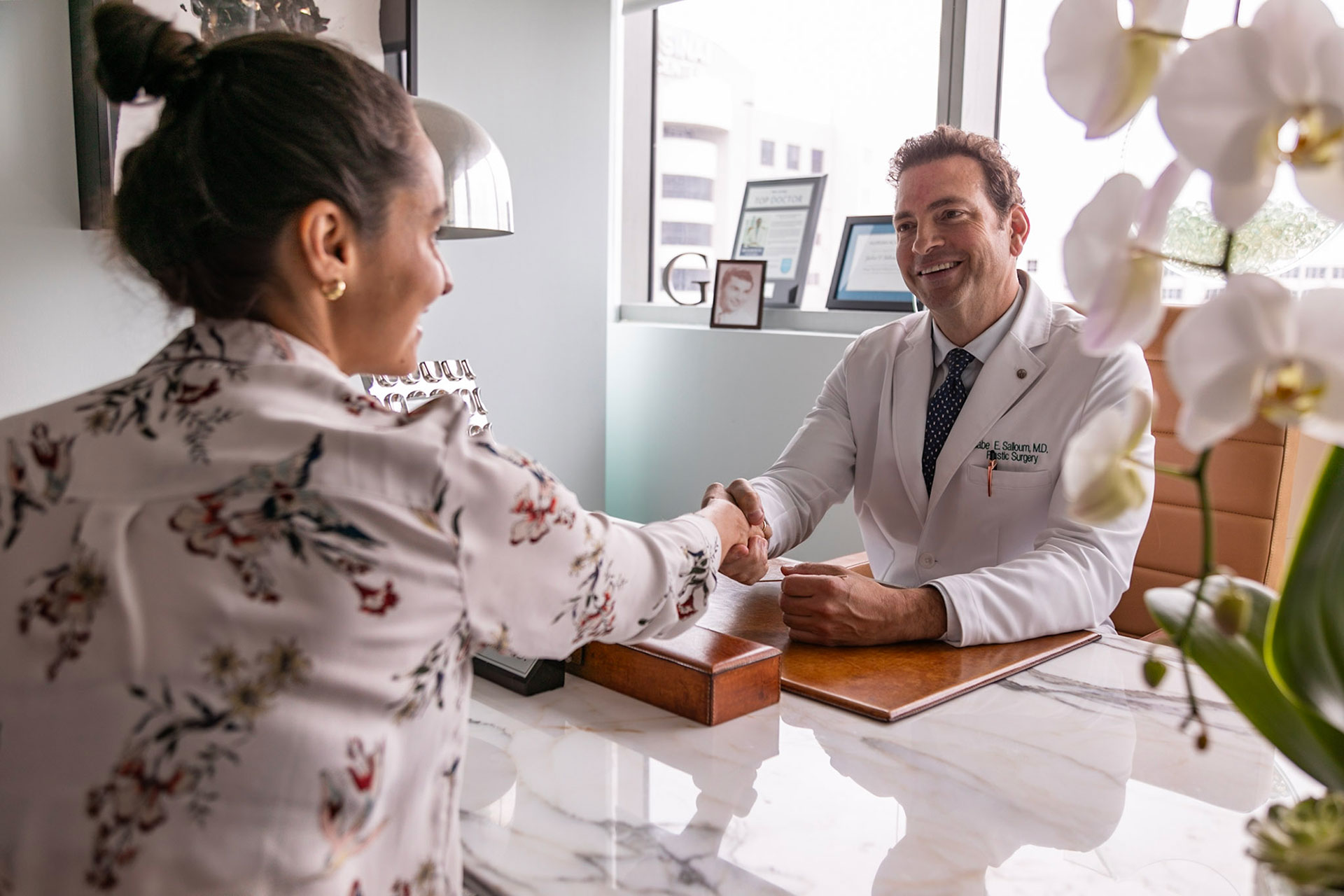
Wondering what recovery from liposuction really looks like? Liposuction surgery—also known as lipoplasty—is one of the most popular ways to remove excess fat and reshape areas like the abdomen, thighs, and arms. But once the procedure is over, many patients are left asking, “How long will it take to heal?” Understanding the full recovery process is key to getting the most out of your plastic surgery experience.
From initial soreness to final results, recovery can feel like a journey—but it’s one you don’t have to navigate blindly. In this guide, we’ll walk you through the entire liposuction recovery timeline, help set realistic expectations, and give you tips for a smoother healing process. Whether you’re considering the procedure or already scheduled, knowing what lies ahead is the first step toward a successful transformation.
How Long Is Recovery From a Liposuction Procedure?
The recovery after liposuction typically spans several weeks, with most patients returning to light activities within a few days and resuming normal routines within four to six weeks. Swelling and bruising may be present for a few weeks, and results become more visible as your body heals. Small liposuction incisions are made in discreet areas to minimize scarring, and post-op garments are often recommended to support healing. Full recovery varies based on the extent of the procedure and your overall health.
Day-by-Day Liposuction Recovery Timeline
Every patient heals differently, but there is a typical liposuction recovery timeline that provides a general idea of what to expect after your surgical procedure. Breaking down the recovery by days and weeks helps you plan your schedule, manage expectations, and recognize what’s normal during each stage of healing. Here’s how your body is likely to recover following liposuction.
Day 1 after Surgery
Immediately after your liposuction procedure, you’ll likely feel groggy and sore. It’s normal to experience numbness, swelling and bruising around the treated areas, as your body begins the healing process. Compression garments will be applied to minimize fluid buildup and support the tissues. You’ll also notice small dressings covering each incision site. Rest is essential on this day, and it’s important to have someone assist you at home as the anesthesia wears off.
Day 1
Days 2-3
These days after surgery are often marked by moderate discomfort and fatigue, but pain is usually manageable with prescribed medication. Swelling and bruising around the treatment area may increase temporarily before beginning to subside. You’ll likely be encouraged to move around gently to promote circulation and prevent blood clots. Keeping compression garments on and following your post-op instructions will help support healing and minimize complications.
Days 2-3
Day 4-7
During the first week, you should begin to feel more like yourself as energy levels return and pain continues to decrease. Any post-operative side effects, such as swelling, bruising, or minor drainage from the incisions will gradually improve during this time. Light walking is typically encouraged, and you may be able to resume non-strenuous activities depending on your surgeon’s advice. Continue wearing your compression garments as directed to support the healing process and maintain your results.
Day 4-7
Weeks 2-3
By the second week, you’ll likely notice a marked decrease in swelling and bruising. Many patients begin feeling more comfortable resuming light daily tasks during these weeks after surgery. Mild physical activity is often allowed, but you should still avoid anything too strenuous. Your surgeon may clear you to stop wearing compression garments depending on your progress, though some residual swelling may persist. Patience is key, as your body continues to heal and reshape.
Weeks 2-3
Weeks 4-6
As you reach the fourth week of recovery, you should feel significantly more comfortable and mobile. Most of the swelling will have subsided, and your new body contours will begin to take shape. By the sixth week, many patients are cleared to return to their full routines, including strenuous exercise or heavy lifting, depending on individual progress and medical clearance. It’s essential to listen to your body and stay in close communication with your surgeon to ensure you’re healing properly and not overexerting yourself too soon.
Weeks 4-6
6 Months and Beyond
By the six-month mark, most patients have fully healed and can enjoy their final results. The majority of residual swelling will have disappeared, and the newly contoured areas should appear smoother and more defined. You’ll also notice improved skin retraction and firmness, depending on your body’s natural healing response. Maintaining a stable weight and healthy lifestyle is essential for preserving your results long-term and maximizing the benefits of your liposuction procedure.
6 Months
Liposuction Before and After Pictures
 Explicit content – Discretion advised.
Explicit content – Discretion advised.
 Explicit content – Discretion advised.
Explicit content – Discretion advised.
*All patients are unique and individual results may vary.
Tips for a Smooth Liposuction Healing Process
Following the right post-operative routine can significantly improve the quality and speed of your recovery. From what you eat to how you rest, every choice you make after surgery affects the outcome. Below are some essential tips to help ensure your healing process is as smooth and successful as possible:
- Eat a nutritious, anti-inflammatory diet: Fuel your body with fruits, vegetables, lean proteins, and whole grains to support healing and reduce inflammation.
- Stay well-hydrated: Drinking plenty of water helps flush toxins and supports cellular repair to ensure a smooth recovery.
- Get enough rest: Prioritize sleep and allow your body time to recover properly without overexerting yourself.
- Avoid tobacco and alcohol: Both can impair healing and increase your risk of complications.
- Wear your compression garments as directed: These help reduce swelling and shape the treated areas.
- Avoid strenuous activity until cleared by your surgeon: Give your body time to heal before jumping back into intense workouts.
- Stay in contact with your surgeon: Regular check-ins allow your provider to track your progress and address any concerns early on.
How Long Do Liposuction Results Last?
Liposuction results can last for many years—often permanently—especially when patients maintain healthy habits after the recovery period. Once fat cells are removed from targeted areas, they do not regenerate. However, remaining fat cells can still expand with weight gain, which is why lifestyle choices are key to sustaining your new shape.
To help preserve their results, liposuction patients should aim to maintain a stable weight, follow a balanced diet, stay well-hydrated, and avoid processed foods that may lead to fat accumulation. It’s also essential to follow post-operative instructions closely during the early recovery stages, attend regular follow-up appointments, and manage stress to prevent hormonal imbalances. These habits not only protect the investment in your procedure but also contribute to overall health and well-being.
Can You Get a Tummy Tuck and Liposuction at the Same Time?
Yes, many patients choose to undergo a tummy tuck and liposuction during the same surgical session. This combination of cosmetic procedures can deliver more dramatic body contouring results, particularly for individuals with stubborn fat in the abdomen and excess skin. Liposuction effectively removes unwanted fat, while the tummy tuck tightens underlying muscles and eliminates loose skin.
Combining these procedures can also minimize overall recovery time compared to having them done separately. However, it’s important to understand that healing from dual procedures may still take longer and may result in more noticeable scars. Your surgeon will help you weigh the benefits and risks, and determine whether pairing liposuction with other procedures is right for your goals and body type.


SPECIALIST CARE YOU CAN TRUST
Dr. Salloum is supported by a brilliant team of caring staff members.
You can trust the entire staff to help make your visit as comfortable and safe as possible!
Schedule a Consultation With a Body Plastic Surgeon
Recovery from liposuction is as important as the surgery itself, which is why selecting an experienced surgeon is key. The right plastic surgeon will guide you through every step of your healing journey, ensuring your safety, comfort, and satisfaction with the final results.
Dr. Gabe Salloum at the Miami Center for Plastic Surgery is a double board-certified surgeon with extensive experience in body contouring procedures. His meticulous approach to liposuction and dedication to patient care make him one of the most trusted names in cosmetic surgery. Ready to take the next step? Call us at 305-405-6910 or visit our contact page to book your consultation.